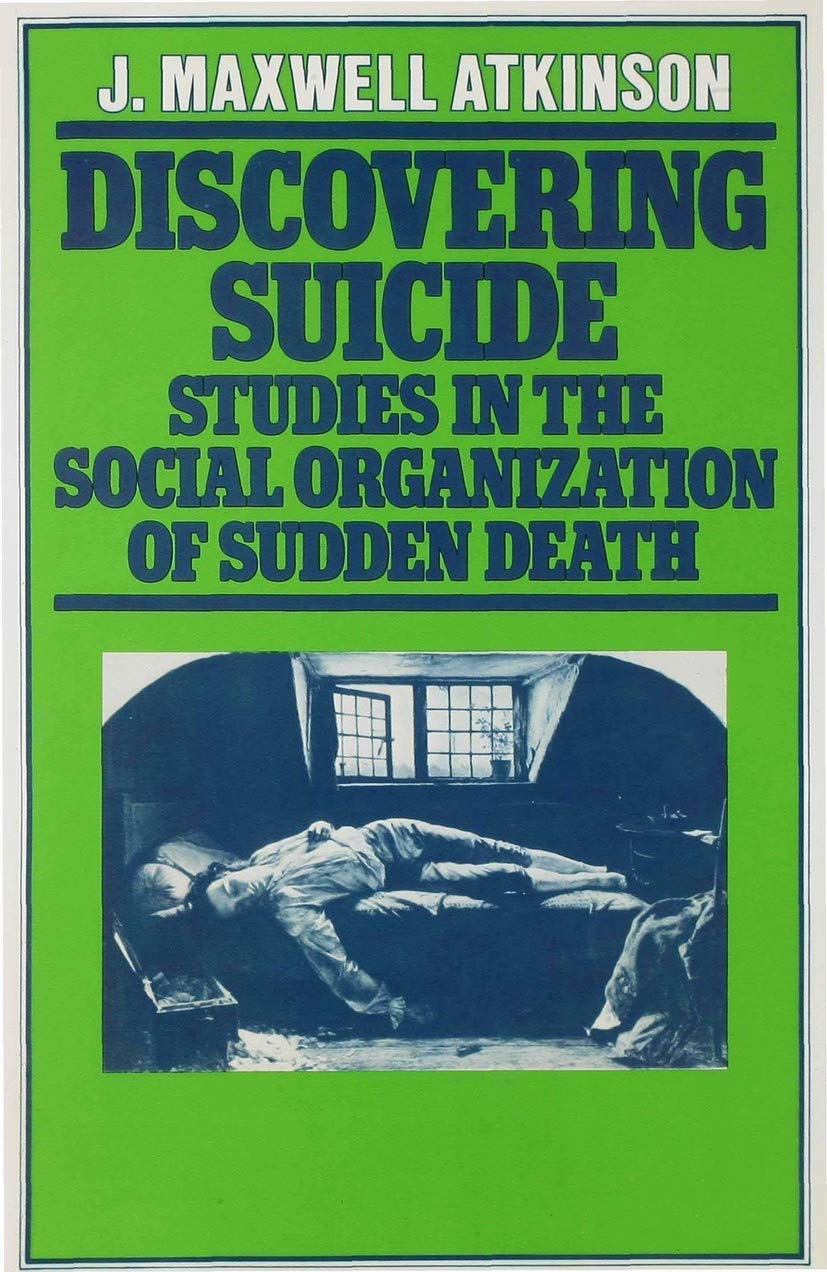Discovering Suicide: Studies in the Social Organization of Sudden Death

J. Maxwell Atkinson’s Discovering Suicide: Studies in the Social Organization of Sudden Death is unusually candid about the state of suicide prevention in 1978. Rather than insisting that we could predict suicide risk when we can’t, Atkinson offers comments like, “…there was something strange about the willingness of sociologists and criminologists to proceed to make generalizations in spite of known difficulties.”
Statistics
Atkinson was equally critical of the inferences made by statistics. Building on the work of others, he points out that the statistical foundation upon which some assertions rested were untenably fragile. We can’t go back too long before we discover that the registration of deaths wasn’t required at all. The degree of expertise necessary in coroners was highly variable, and the key indicating factor for suicide is intent – which is difficult to assess postmortem. (See also Postmortem.)
He suggests that, rather than relying on such unreliable sources, we needed to begin with more contemporary studies – and allow for similar distortions of the data.
A General Theory
Atkinson even criticizes the idea that there could be a single theory of suicide by using an example: “to construct a general theory to explain why people dig holes would be to put one’s judgement severely in question.” He explains that, like suicide, the reasons for digging holes varies widely. Because of that, no single theory could suffice.
Scholars after him would struggle to find unifying theories of action. Today, we struggle to have theories of suicide that are broad enough to encompass all suicide attempts and narrow enough to be useful.
Indicators
Atkinson, while acknowledging the difficulties, still sought indicators. In the case of a drowning in the river, he’d look for whether the clothes of the person were neatly folded on the shore or simply tossed in a pile. He believed that neatly folded indicated suicidal intent. I, however, think it indicates some level of need for order.
Other examples, like an overdose taken in the middle of the woods, are a slightly more generalizable and potentially reliable indicator. Except in cases where the person became disoriented, it’s more likely that the preparation of going someplace secluded indicated a degree of planning. That planning seems to have little other purpose than to ensure that they’re not interrupted.
There are no easy answers to explain the phenomenon of suicide. Atkinson offers solid critical approaches to the research being done. Discovering Suicide doesn’t have answers, but its criticisms of the field are useful.
